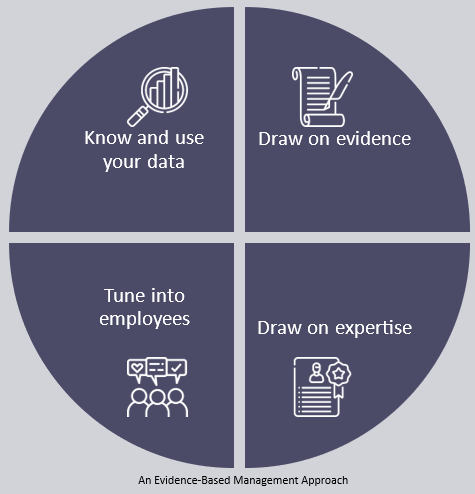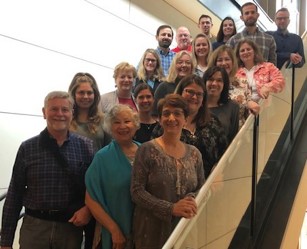Findings from Seven Years of Child Welfare Workforce Interventions
The Quality Improvement Center for WorkforceDevelopment (QIC-WD) operated for seven years and worked with 57 distinct public and tribal child welfare jurisdictions to address workforce issues. We used agency data, an evidence-based management approach, and were supported by site teams that included human resources (HR) and child welfare professionals.
We engaged in in-depth, multi-year projects in eight of the sites, and highlights from those experiences are featured in this short video. A consistent approach to implementation was applied and rigorous evaluation methods were used in those workforce intervention sites, with the goals of improving worker performance, well-being, and retention. Interventions reduced turnover in some sites and valuable lessons were learned related to improving practice and well-being. This article features findings from the multi-disciplinary QIC-WD team, based on our work with the intervention sites, two rounds of workforce analytics institutes, one-year rapid- cycle recruitment projects, and one-year workforce data dashboard projects.

The QIC-WD was primarily tasked with addressing turnover, an ongoing problem in child welfare. There are a variety of contributing factors and no single solution to address it. This challenge was central to the work of the QIC-WD in all our initiatives. We applied a standard way to measure turnover and assess the underlying causes of turnover, and we used data to make decisions. Across our projects we emphasized the importance of partnering with HR, and we leveraged workforce specialists within our team to develop customized jurisdiction-specific interventions when indicated by organizational needs.
The QIC-WD workforce interventions were all designed to decrease worker turnover, and some addressed elements of practice and well-being, yet the interventions varied in how that work was conducted. Some agencies started at the very beginning of the employee lifecycle, thinking about how employees were selected and onboarded. The competency-based selection process tested in Oklahoma was custom designed based on input from workers and supervisors to develop an interview process that would identify candidates who possess the fundamental competencies that are needed but cannot or will not be trained on the child welfare worker job. Our study found that this new process lowered the risk of an employee leaving by 22% . The onboarding program designed for the Eastern Band of Cherokee Indians was implemented on a smaller scale and was found to result in better organizational socialization, which is known to be related to turnover, among those who participated in it.
Another approach to addressing turnover was to reexamine the job all together. In Louisiana, the QIC-WD team conducted a job redesign, which involved HR and civil service representatives in addition to agency staff. This complex initiative resulted in the creation of teams focused on prevention and permanency. Each team included a newly designed professional role, the Child Welfare Team Specialist, responsible for administrative aspects of the caseworker job. We found that the teaming model improved a variety of measures related to staff well-being and case practice, although it did not impact turnover.
Attention was also paid to the experience of the worker and their well-being as a means of improving retention. Well-being can be addressed in many ways including perceived organizational support, supervision, managing secondary traumatic stress, and supporting work-life balance. The Milwaukee site implemented ARC to elevate worker voice in agency decision making, and we found positive changes in organizational culture and climate, openness to change, psychological safety, and leadership support. In addition, retention was higher among those who participated in ARC teams, compared to those who did not.
Two other agencies implemented Resilience Alliance (RA) to address job-related traumatic stress. Ohio supplemented RA with supportive supervision, and Nebraska enhanced RA with peer groups. Participants in both states had a positive experience with RA. In Ohio the intervention positively impacted participants’ coping and resilience skills among other outcomes, although RA did not have an impact on turnover in either site. Finally, two QIC-WD sites addressed worker well-being by enhancing the job with a formal telework policy and technology tools to improve access to administrative information remotely. The telework study in Washington found no effects on job attitudes or turnover, although interviews with participants identified a number of perceived benefits and challenges of telework in child welfare settings. The mobile application developed in Virginia had a positive impact on the workforce, especially when working from home became the norm in 2020. The implementation of the COMPASS|Mobile application was found to enhance staff beliefs that the agency cares about them, reduce stress, and improve some practice outcomes, although the intervention did not impact turnover.
 There is no simple solution to “fix” the turnover problem in child welfare. It requires strong partnership with HR, an understanding of workforce data, a commitment by leadership, thoughtful communication and implementation strategies, and the inclusion and buy-in from child welfare workers to inform the workforce initiative. There is always some type of crisis situation impacting agencies (during our short tenure there was a pandemic, the “great resignation,” natural disasters, a federal administration change, and project leadership changes in every site). Thus, the QIC-WD studied interventions in real-world conditions, adapting as needed, like child welfare agencies do every day.
There is no simple solution to “fix” the turnover problem in child welfare. It requires strong partnership with HR, an understanding of workforce data, a commitment by leadership, thoughtful communication and implementation strategies, and the inclusion and buy-in from child welfare workers to inform the workforce initiative. There is always some type of crisis situation impacting agencies (during our short tenure there was a pandemic, the “great resignation,” natural disasters, a federal administration change, and project leadership changes in every site). Thus, the QIC-WD studied interventions in real-world conditions, adapting as needed, like child welfare agencies do every day.
As we wrap up the QIC-WD, we are thrilled to have contributed additional evidence to the field of child welfare about what works and where more research is needed. In addition to site-specific studies, a workforce research catalog to support child welfare workforce researchers and child welfare leaders in understanding the connections between different elements of the workforce literature is now available to inform decision making. We also built capacity among jurisdictions to analyze their data and created workforce analytics dashboards to demonstrate how data visualization can support teams in using their HR data more effectively. Undoubtedly, the QIC-WD has only scratched the surface in answering the complex question of “what works?” in addressing child welfare worker turnover, but we have curated the research from a variety of fields, conducted rigorous evaluations in real world conditions, condensed lessons into tips, and provided our take on what we see happening in the child welfare workforce across a variety of jurisdictions. We’re pleased that the University of Nebraska’s Digital Commons will host our products and ensure widespread accessibility of forthcoming research journal articles, and that the Child Welfare Information Gateway and National Child Welfare Workforce Institute will house our vast collection of products. It is our hope that child welfare leaders, professionals, and researchers will build on our work to continue to support the field as they advance in using data to make informed decisions to strengthen the child welfare workforce.